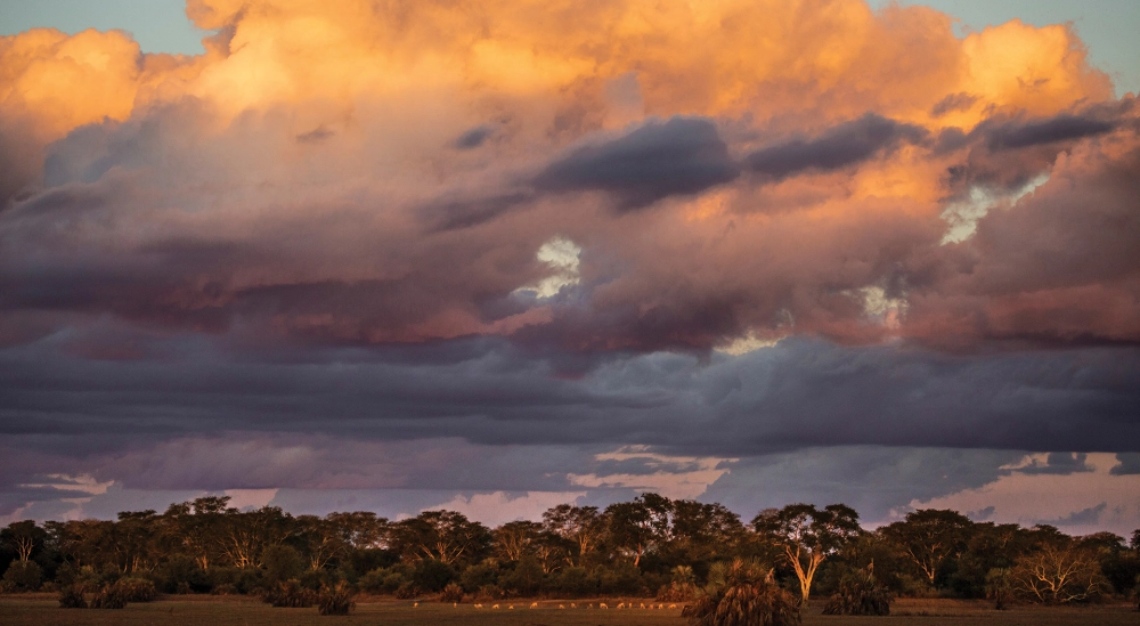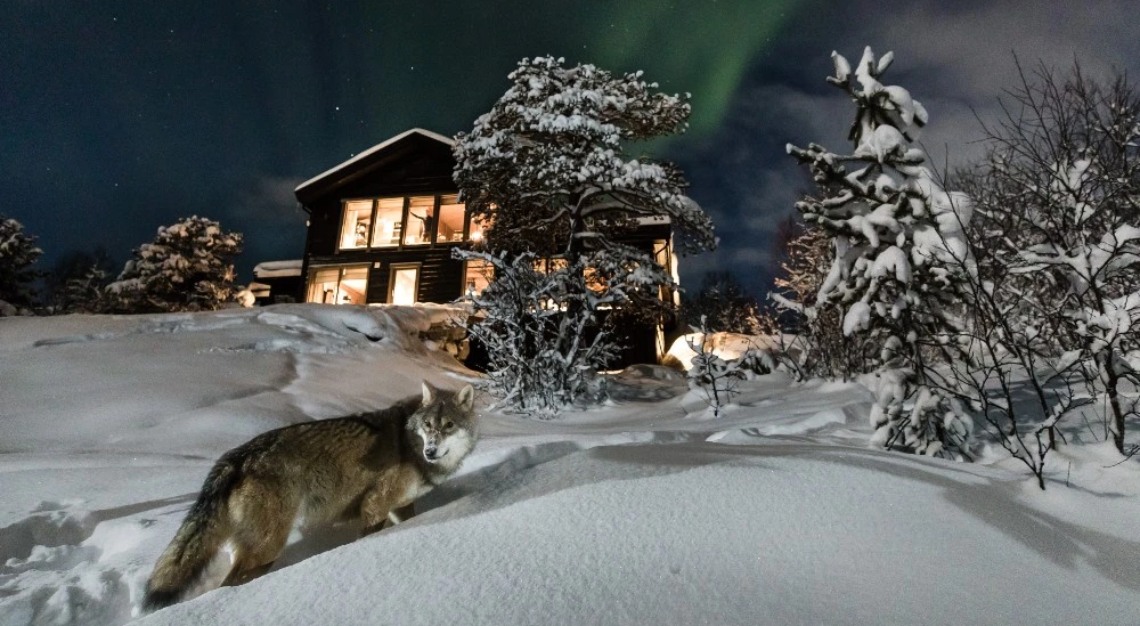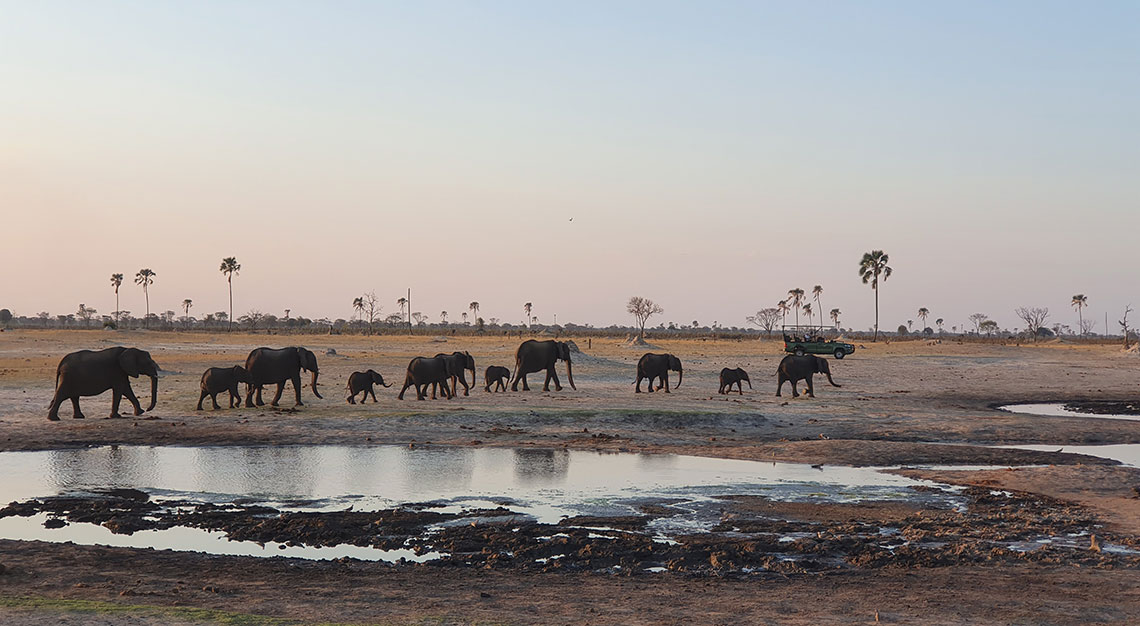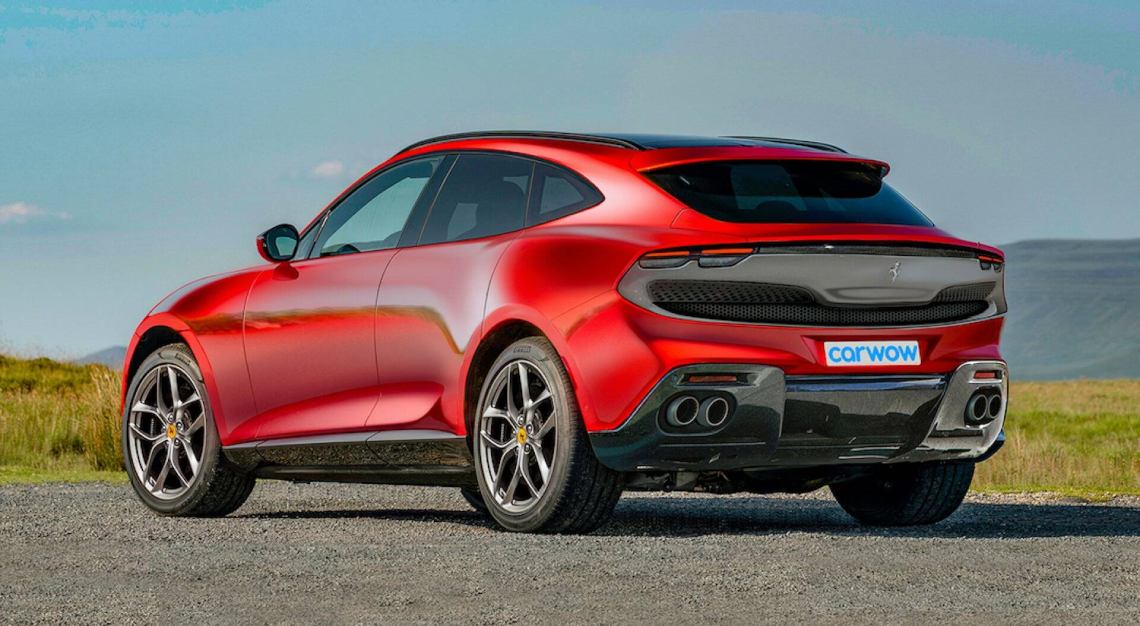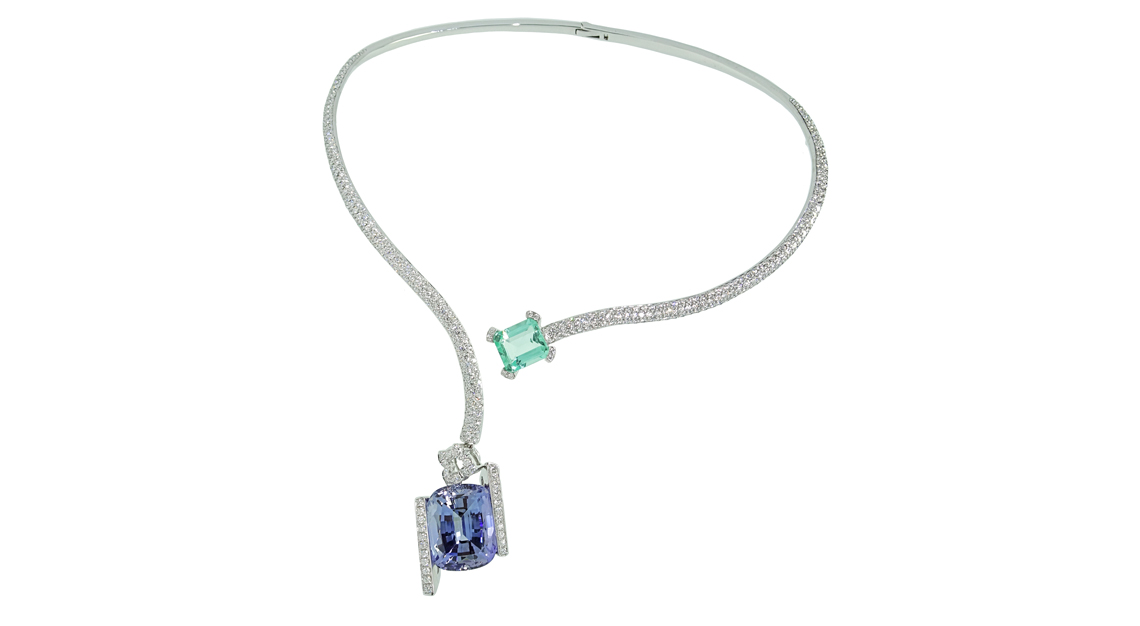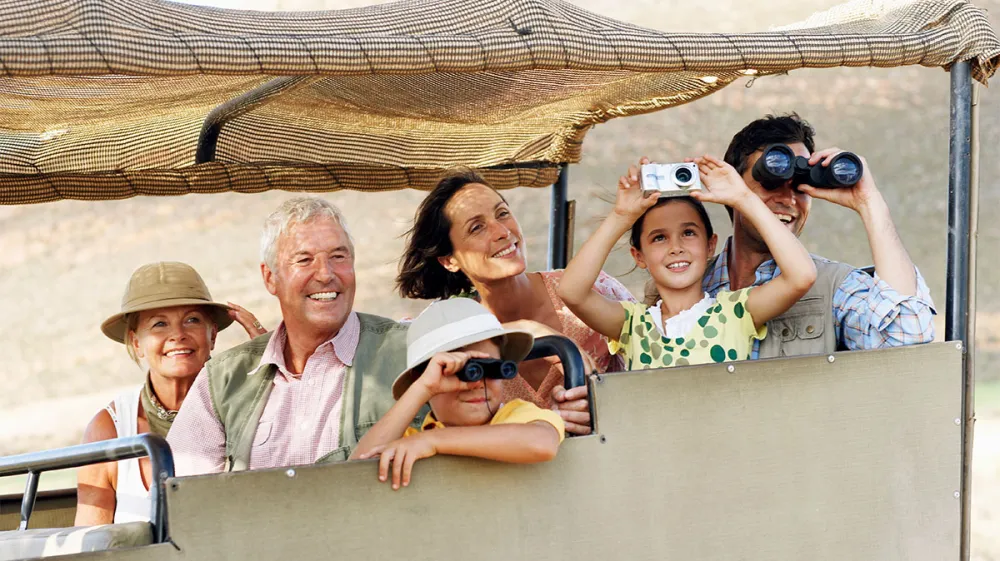Following a devastating civil war, American entrepreneur Greg Carr has invested roughly US$100 million of his personal funds to the park’s restoration
The first time Greg Carr visited Mozambique’s Gorongosa National Park, in March 2004, he left a message in the visitor’s ledger, unaware the brief missive would prove prophetic—or that he would play a crucial part in its fulfilment. In the slim, faded black book from the early 2000s, among comments spaced months apart—a sign of the dismal tourism numbers—he wrote: “This is a spectacular park and it could become one of the best in Africa with some assistance. Greg Carr.”
Almost two decades later, his encouraging words in the guest book have begun to ring true. Only an eternal optimist could have written such a positive assessment of a place that had been all but abandoned, where the most visible signs of animal life were swarms of mosquitoes. Gorongosa, sprawling across more than 3,800 square kilometres at the southern point of the Great Rift Valley, in the central part of the country, was once an illustrious swath of land with a richly biodiverse terrain bursting with wildlife. It drew the likes of John Wayne, astronauts, and other high-profile guests and was considered among the greatest reserves in Africa. Portuguese promotional videos from the ’60s and ’70s advertise guests cruising through the bush in groovy VW microbuses and sitting beside a glimmering swimming pool at Chitengo Camp. That was all before the 16-year-long civil war, a devastating and complicated conflict that erupted after independence was won from the Portuguese in 1976. One million people were killed, and the park became a battlefield that decimated the wildlife population. Some animals were slaughtered for bush meat, others for their valuable horns or tusks.
When Carr, now 63, first visited—after receiving an invitation from the Mozambican ambassador to the United Nations, who hoped that he would provide aid to the country—the war had officially ended, but instability remained. Carr was already involved in philanthropy: After making his fortune selling voice mail systems to telephone companies, he devoted himself to humanitarian activities and in 1998 created the Carr Foundation, dedicated to human rights, the environment, and the arts. He didn’t know much about Mozambique, other than some crib notes he’d made after a cursory Google search, but he was curious about the ambassador’s proposition.
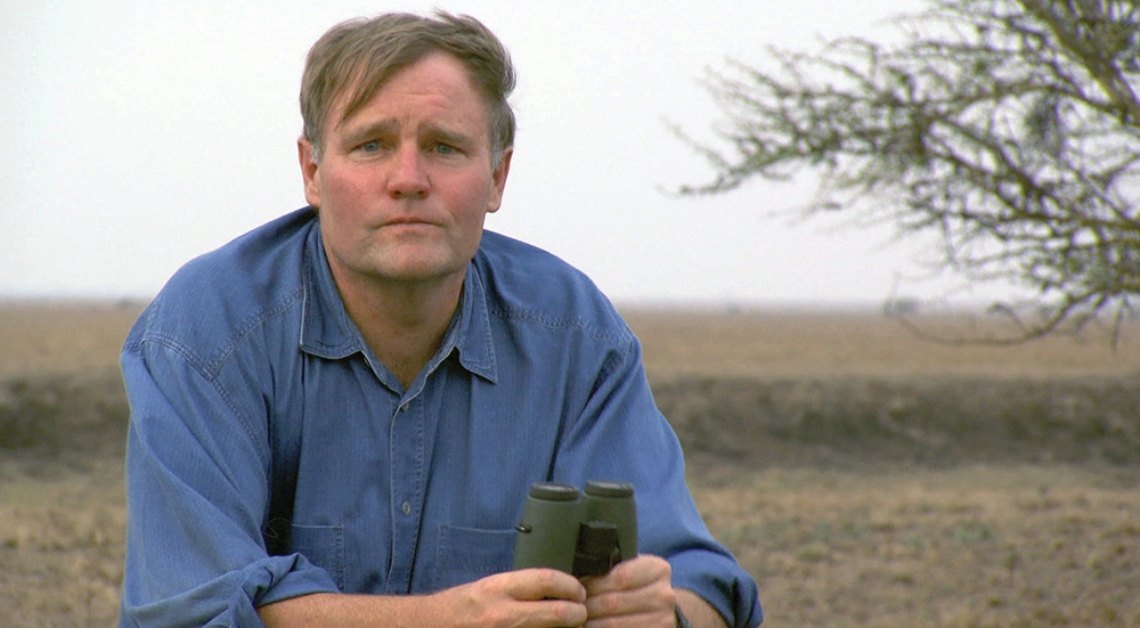
Today, thanks to roughly US$100 million of his personal funds and the expertise of a 900-member-strong team, the Gorongosa Restoration Project is in full swing. The strategy to restore this national park is holistic and encompasses everything from advanced ecological and biological research to building schools, supporting farmers, reintroducing wildlife, and reforesting the land. Though Carr has been instrumental in this vision, when I meet him on a scorching February day in Gorongosa, he jokes that he’s just a tourist here. “This is their country,” he tells me. “This is their national park.”
Setbacks, including the war and ongoing skirmishes with area rebels, a major cyclone, and then Covid, mean the region has suffered more than most, but now it has reached a pivotal point. “It’s an amazing beacon in a really difficult area of Africa,” says Will Bolsover, founder and CEO of Natural World Safaris, who is planning on bringing in guests in 2024. This year, the park will unveil a stunning second lodge, Muzimu, a high-end tented camp with six smart suites overlooking the bush. Community initiatives are soaring: More people have access to clean drinking water than ever, beehives and silos are being distributed, and hundreds of people are producing coffee. For a place that lost 90 per cent of its wildlife population, the herd numbers are staggering. Over the past 20 years, animals have been purchased from South Africa, among other countries, and slowly reintroduced through a careful strategy developed by a team of veterinarians and ecologists. The support of nearly 300 park rangers eases poaching concerns and lets natural reproduction freely run its course.
During an aerial count in 2022, rangers identified over 102,000 animals. The buffalo tally was up from 56 in 2006 to 1,400, and there were some 193 lions. Hyenas and jackals are the latest additions. While some species have been less successful (namely cheetahs), others, such as the endangered African wild dog, have thrived. A pack was reintroduced in 2018, and the animals now total about 150. During my five-day visit, I saw three different packs, which are notoriously elusive; one made a kill right in front of me.
The numbers of leopards, lions, and other high-profile game don’t compare to those of the continent’s most popular tourist draws, such as Kruger National Park (19,484 square kilometres) in South Africa or its neighbour the Sabi Sands, where leopards basically fall from trees. But during Gorongosa’s dry season (April to October), you won’t struggle to find land animals or birds: There are over 465 species of the latter. Head guide and activities manager Test Malunga—who has been in Gorongosa for six years and has worked in South Africa and all over his native Zimbabwe (a country known for its expert guides)—doesn’t think this disparity will deter guests. “Lions, wild dogs, and buffalo are not hard to find,” says Malunga, adding that “you can’t beat the landscape here.” The exclusivity of game viewing is also unrivalled. Unlike the frequent traffic jams of safari Land Rovers in, say, Kenya’s Masai Mara, “you won’t see another vehicle the whole day you’re driving around.”
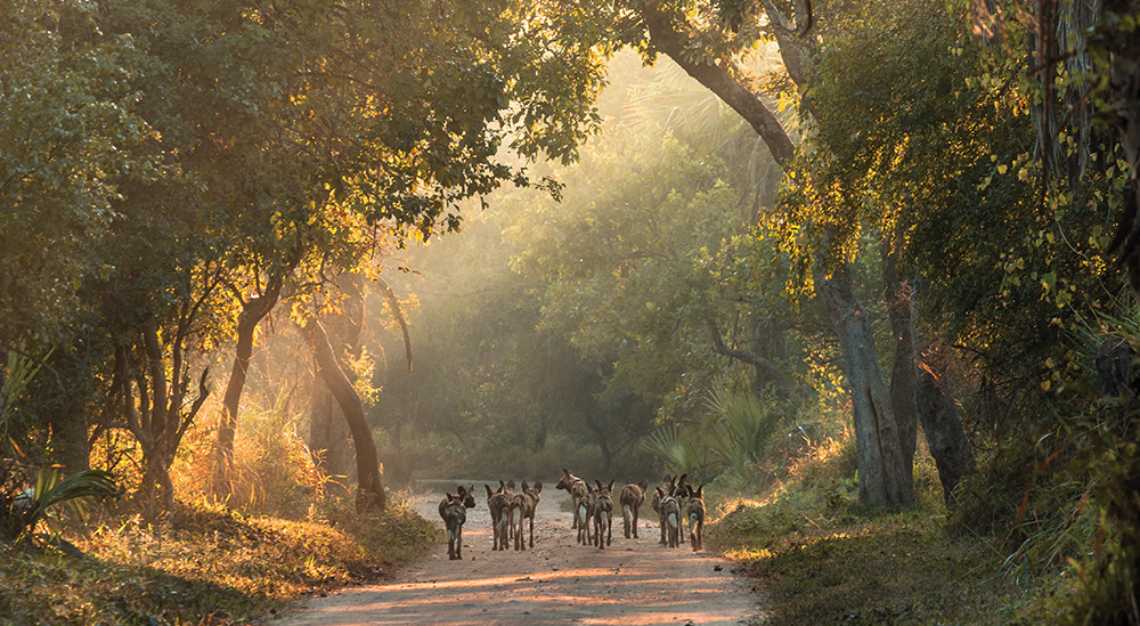
Describing his decision to plow an initial US$36 million into Gorongosa, Carr makes it sound easier than picking out a tie in the morning. When he visited the once-shiny Chitengo Camp, rusty shells of VW buses littered the grounds, old landmines were still buried in the soil, and dilapidated building walls were graffitied with images of guns. Surrounding communities had been destroyed, and people were dressed in shreds of clothes. “There was nothing but mosquitoes!” says Vasco Galante, director of communications for Gorongosa National Park, who has been working with Carr since 2005. On his first flight over the park, Carr was struck by this deserted wilderness, which appeared to go on forever. He saw not just a breeding ground for insects but the fundamentals of an ecosystem that he believed could thrive once again. “I’m not a biologist, but I knew enough that if the ecosystem was intact, you could easily bring back the wildlife,” he says. So he flew to the capital city of Maputo and set up meetings. “I said, ‘Let’s do this thing. Let’s restore your park.’ ”
But from the get-go, Carr insisted on collaborating rather than simply handing over money to the government. It took him three years to hash out the details of the initial public-private agreement with Mozambican officials, which allowed the Carr Foundation to jointly administer Gorongosa National Park. A 20-year contract was signed in 2008, and, in 2018, it was extended to 2043. The nonprofit pledged to funnel any proceeds back into the project.
So what’s a guy from Idaho doing meddling in a park thousands of miles away from home? “I’m addicted to Africa,” Carr confesses. “There’s a line that I heard someone else say, so I’m stealing it, but I love it anyway: ‘If you can go to two continents, go to Africa twice.’ ”
He has never considered himself a conservationist, but rather someone who is interested in human development. On his first flight to Mozambique, he read a book by the prominent economist Hernando de Soto about land tenure in the developing world and how important it is that everyone can own their own property. “The problem with people trying to get themselves out of poverty is they don’t own their land,” says Carr, who has made it part of his mission to help locals secure land rights.
“It has always been a goal of mine,” he adds. Putting people first—by generating jobs, incomes, land ownership, and a sustainable supply chain—was something that won over his dubious colleagues when he started out. “He struck me as sincere and honest. He has the heart, he’s compassionate, he’s committed,” says Galante, who was understandably skeptical of Carr when he first appeared with tens of millions of dollars to spend on a war-torn slice of land. Who wouldn’t be?
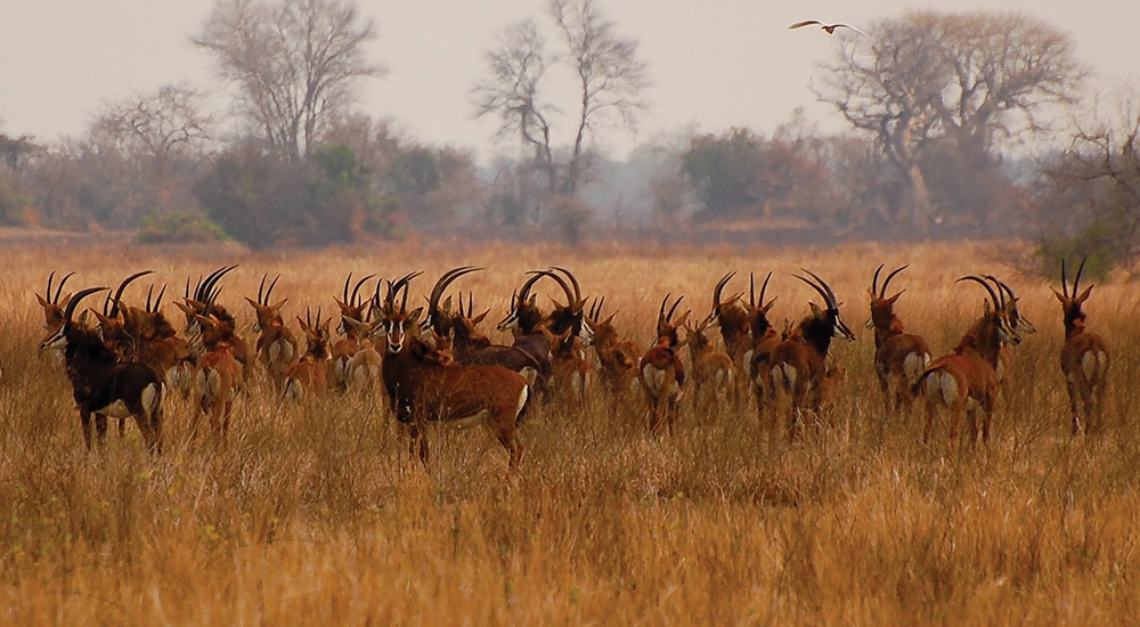
To comprehend all the progress that has been made here, you have to visit a part of the area that was once the most troubled: Mount Gorongosa. A lone mountain, it was turbulent in the 2010s, when rebels infiltrated, but is thriving today. Though a section of the mountain has now been declared part of the national park, to get there, you have to exit the main park and zigzag along the national highway, which stretches all the way south to Maputo and north to Tanzania. For years, this risky road, where violence still erupted, was devoid of vehicles except for the odd military convoy. But today, buses and cars fly past, navigating potholes the size of craters at lightning speed. (Galante shares a photo of a pothole so deep, ducks were swimming in it.) The challenging infrastructure that Mozambicans face every day contrasts starkly with what you see inside the park, where things appear relatively orderly. The highway passes through Vila da Gorongosa, the main town on the edge of the park, which is alive with people pumping music from giant speakers on the roadside and Saturday-afternoon market vendors selling everything from charcoal to clothing. Queues snake outside the bank and the clinic—recent additions to a town once devastated by the war. Turning onto a dirt road, we wind through tall grass and fields of maize and cassava. On a rainy day (like the day we visit), it’s almost impossible to navigate. We skid through mud as sweat drips from our expert driver’s brow.
When we reach approximately 600 metres above sea level, we see the first coffee plants, with plump red berries dangling from their stalks. The small trees, which look so innocuous, have in fact become a lifeline. Not only have they helped reforest the area by growing in tandem with indigenous species and forming a tree canopy, which encourages soil fertility, but they’re also creating a vital economy: The beans are farmed by local producers, roasted with equipment imported from Colombia, then exported. “The coffee is a way to protect the mountain,” says Pedro Muagura, the park warden (whom Carr affectionately calls his boss). When I ask Muagura why he decided to join the team, he tells me it took him six years to agree to the position. “Every year they asked me to join, and every year I said no,” explains Muagura, who had been working as a teacher at the time, bringing in kids to observe the animals. Though he had a deep love for the park (and was actually chased off the mountain by the rebels in 2013), he was skeptical. “I wanted to know his intentions,” he says of Carr. When Muagura flew over the park with Carr and Galante and saw how the forests were being slashed and burned, he immediately changed his mind. “I don’t remember it, but they told me I was crying,” says Muagura, who studied forestry and has an affinity for plants.
I follow him along a narrow mountain path as he collects seeds and fruits that he’ll germinate later. When we get to a waterfall crossing, he stops and contemplates how to traverse it. Stones have been laid out to form a bridge, and a rope is strung between two trees on either side, so we grab hold and navigate across the gushing water. On the other side lies what could be considered the future of the mountain: a nursery filled with neat rows of indigenous saplings, including mahogany and panga panga, as well as varieties of coffee plants, which will all be cultivated beneath the shady tree canopy. This is Muagura’s sanctuary and part of the greater plan for the park: to reforest as much, and as quickly, as possible. “We are trying to create resilience,” he says, pointing to a collection of coffee saplings composed of seven new species from Brazil. Even though the plants aren’t native, they grow relatively quickly, creating more biodiversity and a welcoming environment for birds and other species while allowing farmers to generate income in a rural area. New producers are joining all the time; by December 2022, there were over 800. Muagura stops, smiles, and listens to the birds chirping. “You couldn’t hear them before,” he says. “Thanks to the reforestation,” he continues, “they’re coming back.”
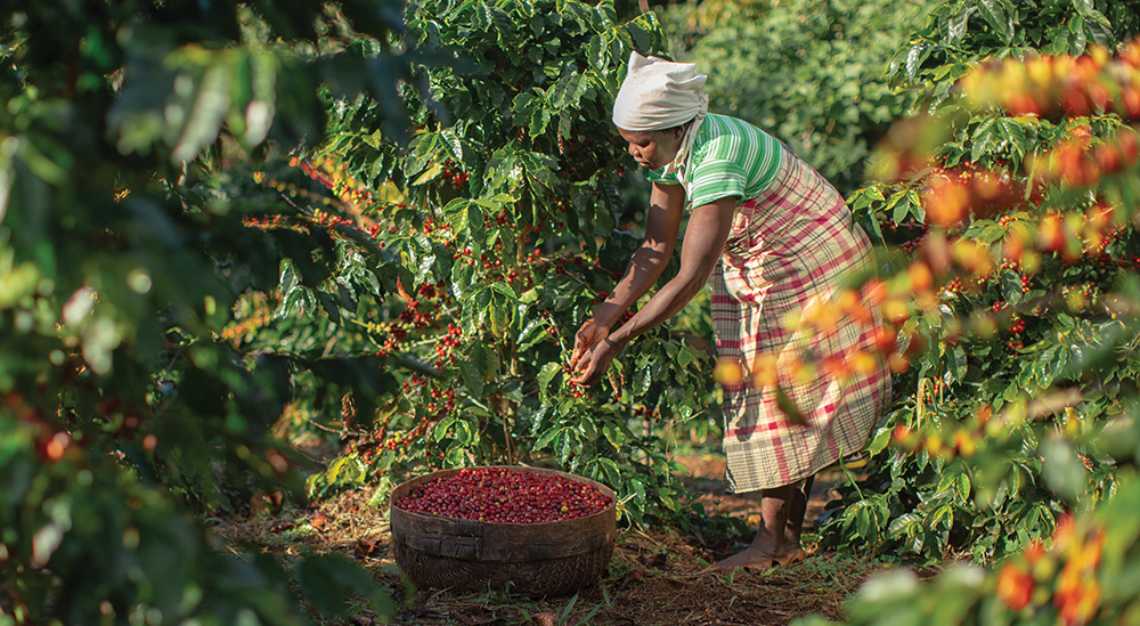
Much else is coming back to Gorongosa, including sustainable income for many locals. Gaining land rights for farmers who live on the edge of the park, in what they call the buffer zone, is one of Carr’s biggest objectives. Looking back, he wishes he’d focused on crops earlier. “If I could go back and talk to Greg who wrote in that book in 2004, I would say to him, ‘Start agriculture sooner,’ ” says Carr. But at the time, his focus was on bringing in rangers and eliminating poaching.
It is the day after I’d visited the mountain, a Sunday afternoon, and we’re sitting inside the living room of Carr’s new house, which was recently built near Chitengo Camp. Though it is a simple structure with a modest kitchen and living room, it is a huge upgrade from his former home here: a tent with no air-conditioning. When I arrived, he was knee-deep in paperwork—dressed in a Gorongosa T-shirt, his laptop under his arm. He had just eaten lunch with some team members, discussing various park strategies. A few days earlier, he’d flown in from Maputo, where he’d held several meetings trying to raise more funds. Carr clearly has a knack for drumming up donations—US government aid has been approximately US$50 million since 2008—and is an expert in patience. (He still goes through the visa process each time he visits Mozambique, which is every month or so.) “We have a lot of generous donors,” he says. But there is always more to be done, and he’s playing the long game. He has upped his monetary commitment in stages, investing an additional US$5 million or US$6 million into everything from human development to conservation, science, and tourism, every year since 2004. “I suppose I’ll do it for another 20,” he adds.
Carr rolls out a map onto his living room floor. At the top it reads “Gorongosa Project” and displays an overview of the park, from the wetlands and Lake Urema to Gorongosa HQ and the buffer zones. “I’ve always been a practical person, more than a theoretical person,” he says. “For me, it’s about going and doing it; talk is cheap.” He points to markers on the map, adding, “Every one of these is a school. I think there’s 100 on here. That’s about 40,000 children.” This year, the Gorongosa Project is building another 17 schools and training 600 teachers, as well as helping thousands of farmers. Another of Carr’s passions is the Girl’s Club, an extracurricular program to empower young girls and keep them in school; currently, many marry and become pregnant by the age of 18. In addition, there’s the E. O. Wilson Biodiversity Laboratory, which was founded by the Gorongosa Project and inaugurated by the great American biologist and naturalist who had an affinity for the area. Scientists from around the world visit the lab to conduct research.
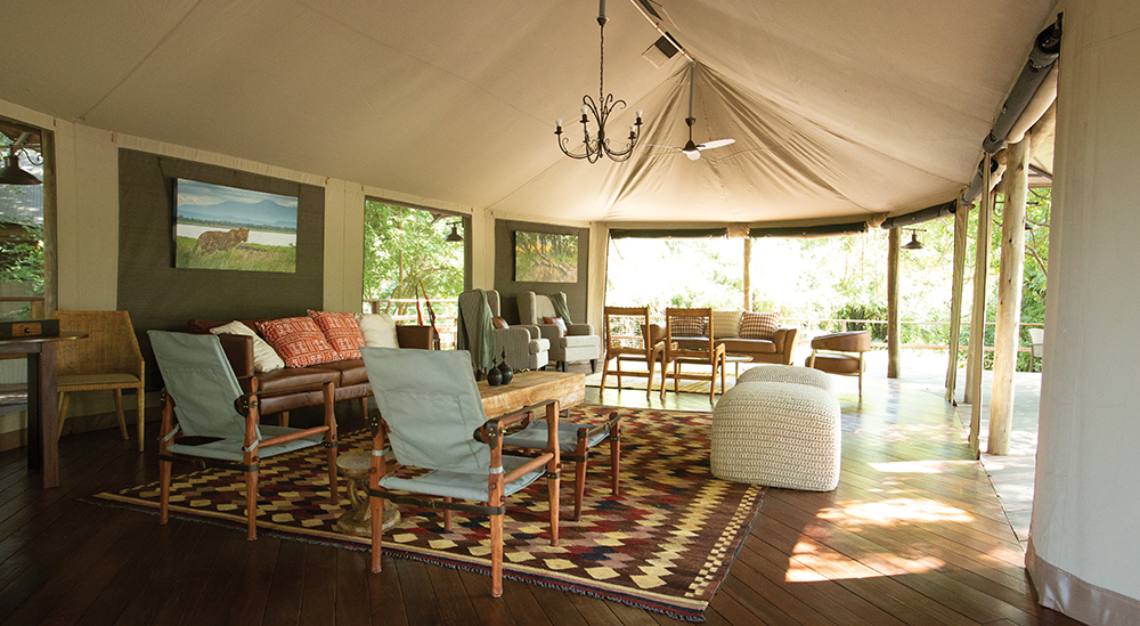
In the next couple of years, Carr aims to expand tourism and perhaps open a few more lodges like the for-profit Muzimu, owned by the Gorongosa Project, including one on the mountain. Maybe other tourism brands, which have been hesitant in the past, will invest too, especially as wildlife numbers rise. “The more stakeholders we have, the more resilient the system,” says Carr. But he can’t hang around and wait for others to make up their minds about Mozambique; there’s too much to be done. He’s hopeful that the right tourists will rediscover the park. Not only does Gorongosa offer a safari experience, but there are also magnificent limestone gorges and waterfalls to explore, labs to tour, and communities to visit
“There aren’t many places in Africa where you can pretty much have the park to yourself,” says Bolsover, of Natural World Safaris. “People who want to visit Gorongosa are prepared to put in the effort to travel and spend time on the ground,” he adds. “It’s about slow travel. They’re coming for the greater story; it builds and grows on you.”
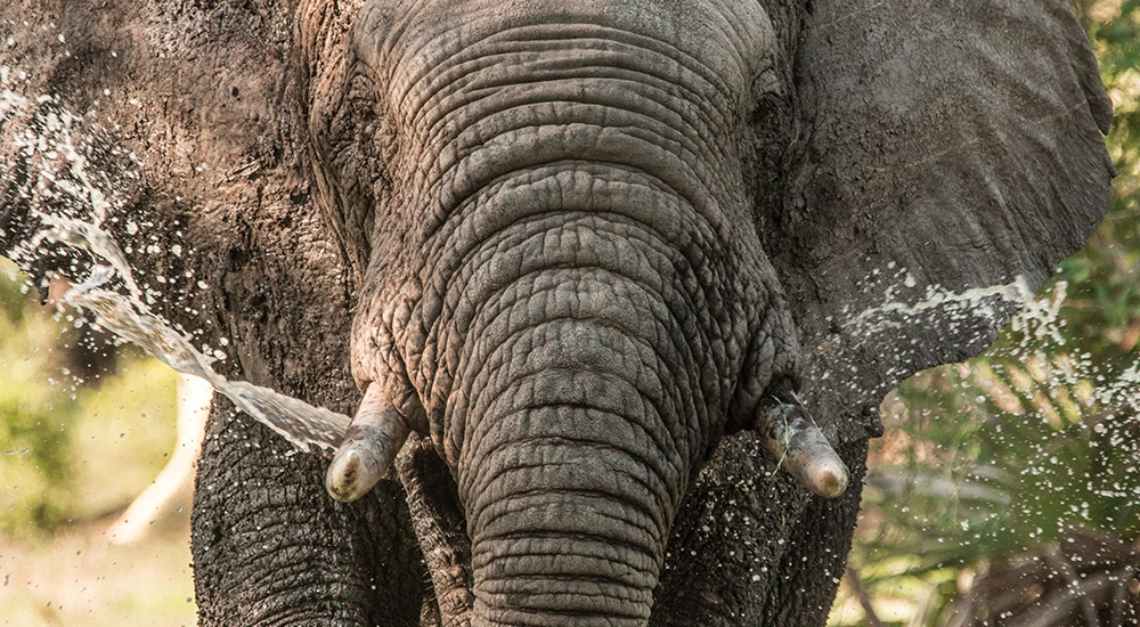
I ask Carr if he’d ever consider restoring another public park elsewhere, and he is quick to respond. “It’s about doing more things here,” he says. It’s clear that Gorongosa is his life’s work: The plan is never to stop advancing—in everything from science and education to conservation, farming, health care, and wildlife. He contemplates which animals he’d personally like to see reintroduced to the park. He’d love to have more zebras, though he knows the scientists would probably argue that more carnivores are needed first to balance the herbivores. “But we could get some,” he says with a grin, then takes on a more serious tone. The animal he ultimately hopes to welcome to Gorongosa is endangered and high in value. Introducing it into such a fragile place right now could potentially kick-start another war. “I think before I leave here we have to bring in rhino,” he says. Rhino poaching in Africa is rampant—a tempting trade for impoverished, vulnerable communities that has devastated many regions in Africa. “It has to be our final thing.” As contentious as that may sound at this moment, when you look at all that has been achieved here, perhaps it’s entirely possible.
This story was first published on Robb Report USA
